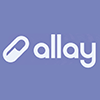
Allay Startup Concept Validation
Over the summer of 2020 I worked with one other person to validate the concept of starting a company to bring the Allay product to market. Ultimately we determined in September, 2020 that we did not have enough expertise in the consumer healthcare market to be confident in our go-to-market strategy, and closed the project down.
See the product design process here.
- Startup Validation
- Market Analysis
- Consumer Healthcare
- Business Case